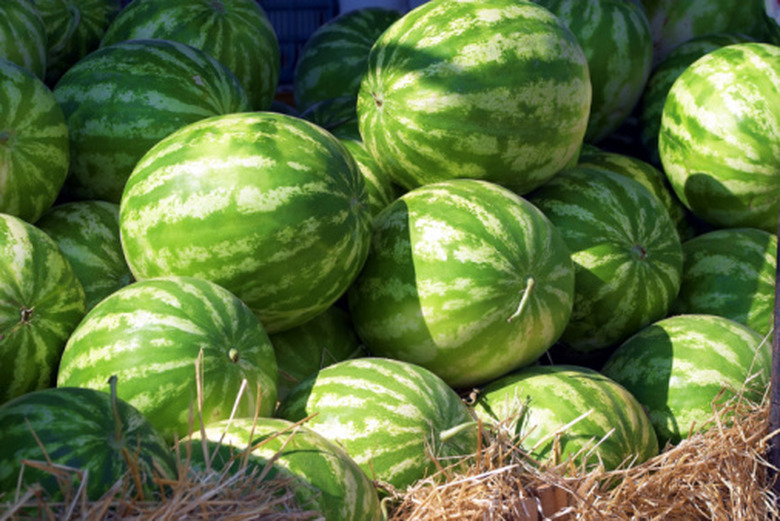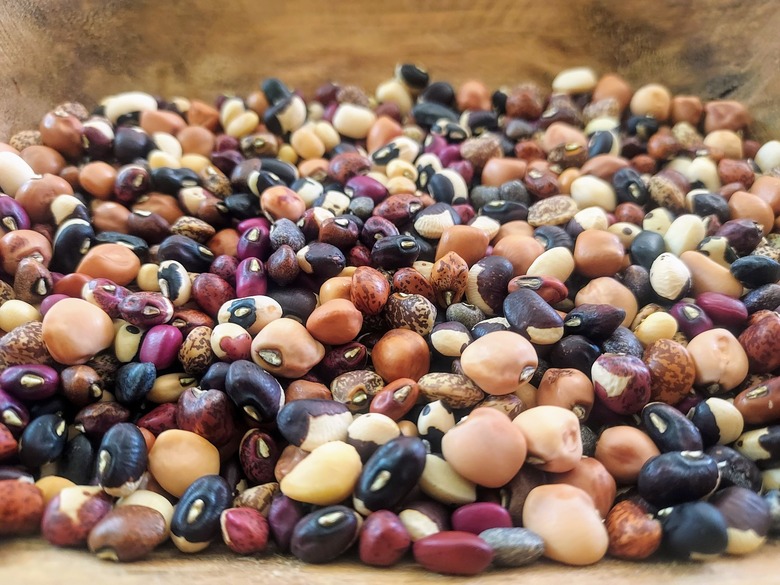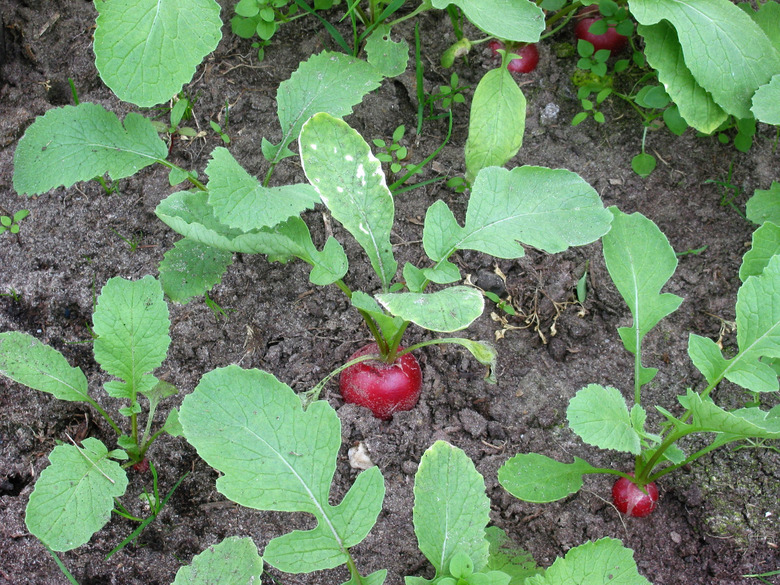Companion Planting And Intercropping For Watermelons
Maybe you've read that planting marigolds (Calendula officinalis) near tomatoes (Solanum lycopersicum L) will deter white flies or aphids, while lavender (Lavandula angustifolia) is a magical tonic that wards off moths.
These are part of what is commonly called "companion planting," but they are, in fact, a form of magical thinking—there is little scientific basis for most recommended companion plant pairs, although you will find multiple websites listing hundreds of so-called fortuitous combinations.
There is, however, a scientific basis for the practice of "intercropping," based on botanical knowledge and real studies in the field. Watermelon (Citrullus lanatus) is indeed a good "companion" plant in a garden. Let's use the term "intercropping," which is used by the experts when there is something . . . well, expert . . . to report.
Tip
Most recommended companion planting is not based on science but rather lore.
The Benefits of Intercropping
Under the soil is a mysterious network of plant roots and fibrous structures, either existing symbiotically with nearby plants or grabbing nutrients and space from their neighbors. Above ground, too, is a cacophony of diverse stems, foliage, flowers and fruit.
The idea behind successful intercropping is to optimize the health of each plant, ensuring enough space, supporting similar growing requirements, building healthy soil and managing pests and diseases.
The Three Sisters
The Three Sisters, an intercropping system initially practiced by Native Americans, co-planted squash (Cucurbita spp.), beans (Phaseolus vulgaris) and corn (Zea mays), according to Texas A&M AgriLife Extension. The university tested this traditional system by co-planting peanuts (Arachis hypogaea L), okra (Abelmoschus esculentus), watermelon, cowpeas (Vigna unguiculata), i.e. black-eyed peas, and hot peppers (Capsicum annuum).
Watermelons helped suppress weeds and provided some shade with their enormous leaves, while peanuts and cowpeas fixed nitrogen in the soil. Okra grows tall and can potentially attract pollinators with its flowers. Hot peppers could dissuade pests.
The study's results revealed that three to four species did produce higher yields, compared to crops that were grown alone.
Benefits to Soil
Different root systems interact with the soil in different ways. Some put down taproots—think carrots (Daucus carota) or radishes (Raphanus sativus)—while others have deep enough roots to access nutrients and water from deep within the soil. Taproots help alleviate soil compaction, while deep-rooted plants don't need to compete with more shallow-rooted varieties for nutrients.
Some plants fix nitrogen, such as legumes (peas and beans, part of the Fabaceae family), so that when they are done, you dig them in, and they enrich the soil.
Creating More Space
Everyone knows that arugula (Eruca sativa) hops out of the ground and rushes to maturity in a nanosecond, so it pairs nicely in the same bed with peppers or tomatoes, which will fill in a garden bed once the arugula is long gone.
Managing Weeds and Shade
Bare soil is a great friend to unwanted weeds, so it's often beneficial to pair lower-growing plants, such as lettuce or spinach, with tall plants, such as pole beans or flowers that need staking. The smaller plants provide some groundcover, while the taller plants provide afternoon shade.
'Companion' Plants for Watermelon
As verified by the researchers at Texas A&M, watermelon is a good option for providing some groundcover to help prevent weed growth for other plants that grow more upright than watermelons.
This study, however, targeted commercial growers rather than home gardeners, noting that peanuts—an unlikely crop for most people—should be planted before watermelons in an intercropping design because they grow more slowly.
The University of California master gardeners of Contra Costa County have some recommendations to add based on the "three sisters" garden design:
- Improve pollination: Plant flowers that attract pollinators near your watermelons, such as sunflowers (Helianthus annuus), Salvia spp., black-eyed Susan (Rudbeckia hirta), bee balm (Monarda didyma) and zinnias (Zinnia elegans).
- Minimize disease transfer: All members of the
Cucurbitaceae family, including watermelon (actually, all melons), cucumber, squash and pumpkin, share susceptibility to the same diseases, including powdery and downy mildew and various soil-borne pathogens. For this reason, keep watermelons away from your cucumbers or other melons to avoid the congregation of a high level of pests.
- Optimize nutrient takeup: Plant shallow-rooted crops next to watermelon since watermelon's deep roots draw nutrients from deeper within the soil. For instance, greens like lettuce (Lactuca sativa), kale (Brassica oleracea var. sabellica) or watercress (Nasturtium officinale) have shallow roots.
Remember, though, that most recommended companion planting is not based on science but rather lore. However, some experienced gardeners have observed over time either negative or beneficial effects from pairing certain plants.
So just because a scientific study has not been done does not mean you should entirely discount gardeners' observations and experience. Just don't believe everything you read, and try out combinations that make sense to you in your own garden.
References
- University of California Master Gardeners of San Mateo and San Francisco Counties: The New Science of Companion Planting
- Texas A&M AgriLife Extension: Intercropping Boosts Vegetable Production
- West Virginia University Extension: Companion Planting
- University of California, Contra Costa County Master Gardeners: Growing the 3 Sisters
- University of Minnesota Extension: Annual Flowers That Attract Pollinators
- Rutgers University: Diagnosing and Managing Important Cucurbit Diseases in the Home Garden


